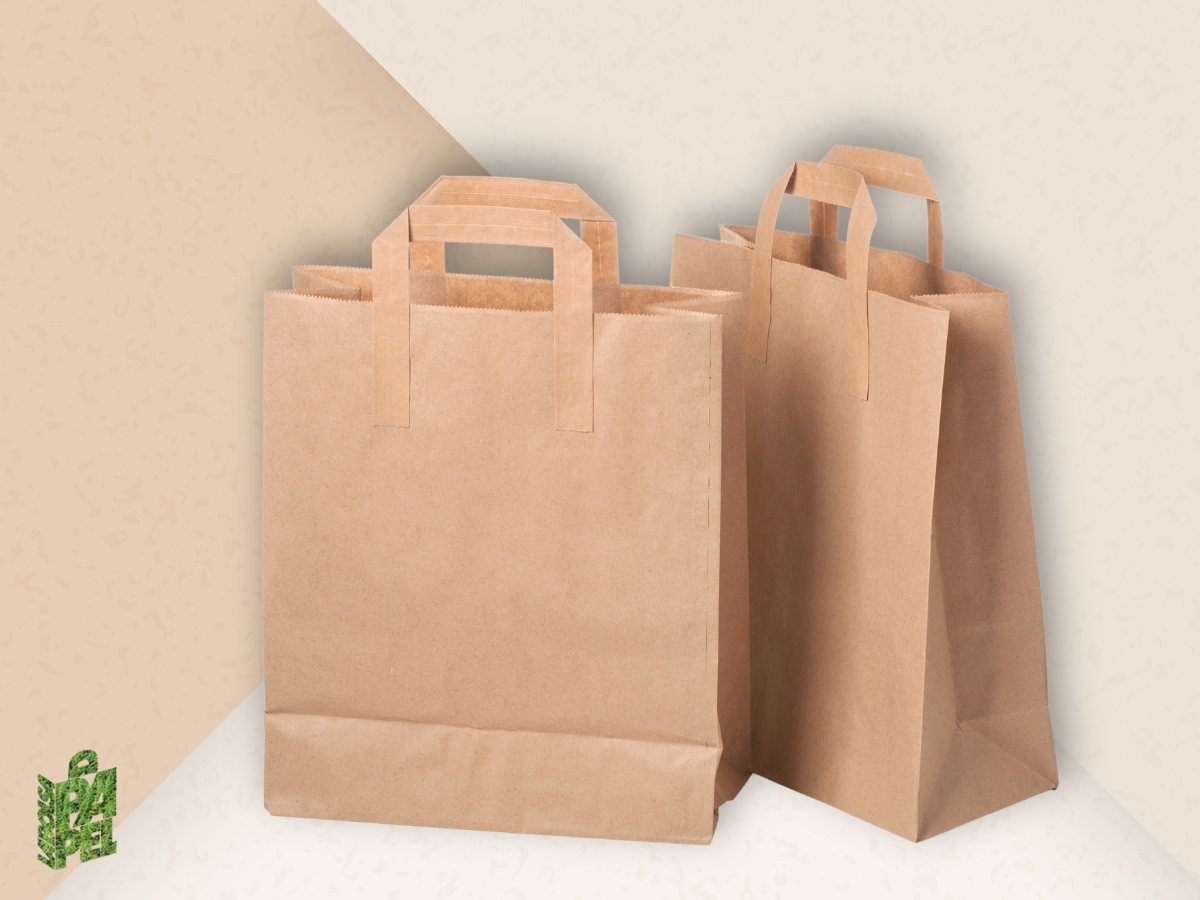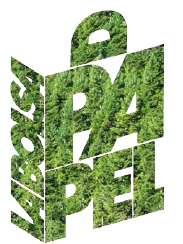Reusable paper bags are becoming an increasingly attractive and popular solution among eco-conscious consumers and companies committed to sustainability.
Durable, stylish, and made from biodegradable materials, they represent a clear evolution in the world of responsible packaging.
In this article, we explore how to make the most of them and highlight the key role played by the paper industry and paper bag manufacturers in advancing the normalization of sustainable bags.
1. What Are Reusable Paper Bags and Why Should You Use Them?
Unlike single-use bags, reusable paper bags are designed to last longer. Made from higher-weight paper and reinforced in the handles and base, these bags can be used multiple times without losing strength or functionality.
From an environmental point of view, their use significantly reduces the volume of waste, since their reusability limits the need for new bags in the short term.
Additionally, because they are produced by responsible manufacturers within the paper industry, they come from sustainable sources and meet strict environmental standards.
Reusable paper bags are also an ideal support for brand communication. Their surface allows for high-quality printing that preserves vivid colors and clear messages—perfect for promotions, events, or retail. Using them is not just a matter of functionality but also a statement of values in favor of responsible consumption.
2. How to Keep Your Reusable Paper Bags in Excellent Condition
To get the most out of them, it’s essential to know a few key tips for properly caring for your reusable paper bags. Although sturdy, they do require certain precautions to ensure longevity.
Avoid moisture: While some versions are treated to repel water, most paper bags remain vulnerable to humidity. Store them in dry places and avoid exposure to liquids or very damp environments.
Don’t overload them: Even though many reusable paper bags can carry up to 15kg, each paper bag manufacturer sets a recommended weight limit. Respecting this limit is essential to avoid tears or deformation.
Fold them correctly: Paper bags usually come with reinforced handles and bottoms, but when not in use, fold them neatly to avoid corner breaks or structural damage.
Repurpose when worn: When they’re no longer suitable for their original use, repurpose them as containers for home recycling, clothing storage, or even sustainable gift wrapping.
With these simple tips, it’s easy to extend the life of your bags and continue enjoying their functional and environmental benefits.
3. Creative Uses for Reusable Paper Bags at Home and in Business
Reusable paper bags aren’t just for carrying items. Thanks to their durable and attractive design, they have multiple applications both at home and in commercial settings.
At home, they can be used for:
- Organizing office or school supplies
- Sorting dry goods in the pantry
- Storing small items in closets or drawers
- DIY projects or crafts with kids
In business settings, they are useful as:
- Packaging for premium products
- Promotional bags at trade shows and events
- Eco-friendly brand communication tools
Some companies have even begun offering discounts to customers who bring back their bags. This initiative not only encourages brand loyalty but also actively promotes responsible packaging practices.
These examples showcase the versatility of paper as a functional material in everyday life and demonstrate how the paper industry has adapted to new demands with useful, durable, and responsible products.
4. Innovation in the Paper Industry Serving Sustainability
Behind the development of reusable paper bags lies a continuous effort of innovation from the paper industry and paper bag manufacturers. Thanks to increasingly clean processes, renewable materials, and eco-efficient technologies, these bags are now a low-impact environmental solution.
Some of the most significant advances include:
- Use of high-quality recycled paper that retains strength without compromising sustainability.
- Incorporation of plant-based inks and biodegradable adhesives.
- Improvements in structural design to handle greater weight.
- Reduction in water and energy consumption during production.
Many manufacturers are also certified by international organizations like FSC or PEFC, which guarantee responsible and transparent forest management. These labels are trusted by consumers and businesses seeking truly sustainable products.
Innovation is not just found in the final product but also in the processes and values defining this new era in the paper industry: environmental commitment, circular economy, and cross-sector collaboration.
5. How to Choose Truly Sustainable Eco Paper Bags
With so many options on the market, it’s important to identify which eco paper bags meet genuine sustainability criteria. Here are some key points to consider:
- Paper origin: Make sure it comes from responsibly managed forests. Certifications like FSC or PEFC are valid guarantees.
- Components used: Choose bags made with water-based inks, non-toxic adhesives, and compostable materials.
- Local or responsible manufacturing: Products made by nearby paper bag manufacturers reduce transport-related emissions.
- Functional and reusable design: A sturdier bag lasts longer and avoids the need for frequent replacements.
Finally, support brands and companies that transparently communicate their sustainability policies. Making informed choices is also a form of conscious action.
Move Toward a More Sustainable Consumption Model
Reusable paper bags represent a strong step toward a more sustainable consumption model, reflecting the joint efforts of consumers, businesses, and the paper industry.
With responsible use, creativity, and thoughtful selection, we can maximize their environmental value and turn them into everyday allies of positive change. By choosing products made by environmentally committed manufacturers, we contribute directly to a cleaner, more conscious, and circular future.
 info@labolsadepapel.com
info@labolsadepapel.com






